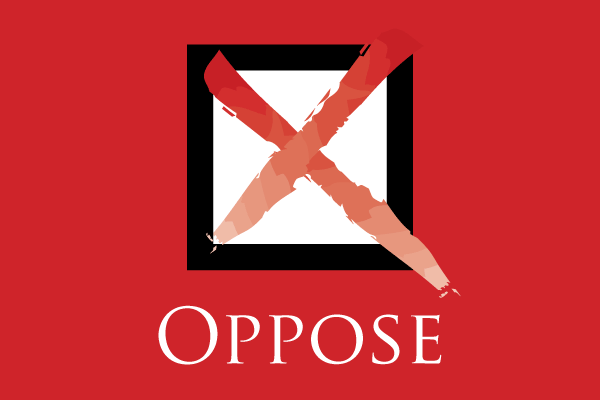 A California Chamber of Commerce-opposed bill that will drive up the cost of health care premiums was placed on the Senate Appropriations Committee suspense file on August 17, pending a review of the bill’s fiscal impact.
A California Chamber of Commerce-opposed bill that will drive up the cost of health care premiums was placed on the Senate Appropriations Committee suspense file on August 17, pending a review of the bill’s fiscal impact.
AB 339 (Gordon; D-Menlo Park) severely restricts the ability of health insurers and pharmacy benefit managers to control health care costs on behalf of purchasers through their prescription drug benefit designs, and places strict caps on prescription drug copayments, shifting more drug costs into premiums.
AB 339 encourages utilization of expensive medications, and reduces flexibility, which will make health care less affordable for all.
While the CalChamber shares the author’s concerns about patients’ ability to afford necessary and potentially life-saving medications, capping out-of-pocket costs for expensive medications without addressing the underlying cost of those drugs will jeopardize the affordability of health care coverage for millions of California enrollees and purchasers.
Shifts Costs
AB 339 does nothing to lower the actual cost of prescription drugs. Instead, it caps what an enrollee can be asked to pay out-of-pocket for a month’s supply of a prescription drug at $250 for most enrollees.
This means that health care issuers would have to pay a larger share of the purchase price for affected prescription drugs and spread that additional cost out to all enrollees and purchasers in the form of higher premiums.
Cost-sharing caps also encourage inefficient utilization of the most expensive medications because the caps shield patients and their doctors from the cost of treatment, preventing them from taking cost into consideration when deciding which prescription drug is the right one to take or prescribe.
If AB 339 were to pass, patients who might otherwise be treated effectively by a less expensive drug would no longer have an incentive to ask about the comparative cost of their other treatment options, nor would their doctors.
AB 339 also would compound the impact of cost-sharing caps by restricting how drugs may be placed into formulary tiers and imposing strict definitions for those tiers.
The strict rules proposed by AB 339 would give drug manufacturers more leverage during price negotiations, make drug prices even less transparent for enrollees and prescribers, and make it harder for insurers and pharmacy benefit managers to craft affordable benefit designs.
Bigger Impact in Future
AB 339 will have an even bigger impact in future years.
Three new hepatitis C medications that entered the market in late 2013 and 2014 had a huge impact on overall health care spending in 2014 due to their high price tags. Medicare alone spent $4.5 billion on them.
While these medications can cost as much as $1,000 per pill, there are only 3 million people in the United States with hepatitis C, and after a course of treatment with one of these drugs, most individuals are cured and do not require additional treatment.
In June, however, the federal Food and Drug Administration approved the first of two new cholesterol medications that are expected to cost between $7,000 and $15,000 per patient, per year.
Even though these new medications will cost much less than those used to treat hepatitis C, they could have an even larger effect on overall health care spending and premiums due to the sheer number of people who suffer from high cholesterol.
To put it in perspective, if all 3 million individuals with hepatitis C were treated at once for $84,000 each, the total cost would be $252 billion, but if all 120 million Americans with high cholesterol were treated for $12,000 each, the cost with these new medications would exceed more than $1.4 trillion each year.
With drug costs rising generally, and new, more expensive drugs entering the market all the time to treat common, chronic conditions, health care costs and premiums are bound to rise no matter what.
But AB 339 eliminates the incentive for patients and doctors to be cost-conscious, and takes away many of the tools health insurers and pharmacy benefit managers use to curb inefficient and unnecessary spending on prescription drugs. As such, it is apt to cause prescription drug spending to rise much faster than it otherwise would, and not necessarily to the benefit of enrollees.
Affordability
Drug cost-sharing caps will affect affordability more outside of Covered California. Unlike the cost-sharing caps imposed by Covered California, which can be modified each year when the agency develops its benefit offerings for the coming year, AB 339 would enact these rules through state statute, making them harder to adjust later on.
In addition, more than 88% of individuals enrolled in Covered California’s plans receive a premium subsidy, which buffers them somewhat from increases to their premium rates, but AB 339 will have an impact on premiums for millions of Californians who do not qualify for these subsidies, and their employers.
For example, the least expensive plan available through Covered California for a family of four making $98,000, just over the eligibility threshold for a premium subsidy, costs $781/month and has a $4,500 individual deductible and a $9,000 family deductible. At 9.3% of that family’s gross income, the premium is hardly affordable, but AB 339 would make it even less so.
Action Needed
Contact your senator and members of Senate Appropriations and urge them to oppose AB 339. An easy-to-edit sample letter is available at www.calchambervotes.com.

